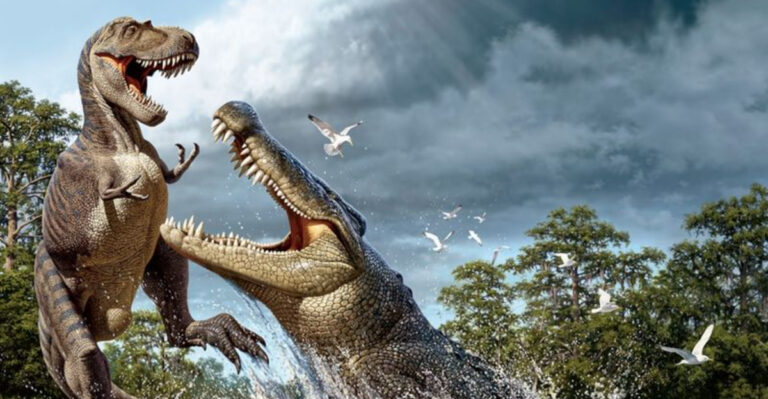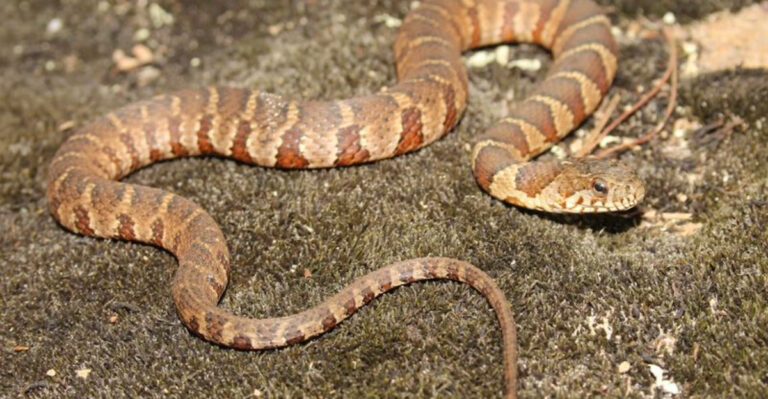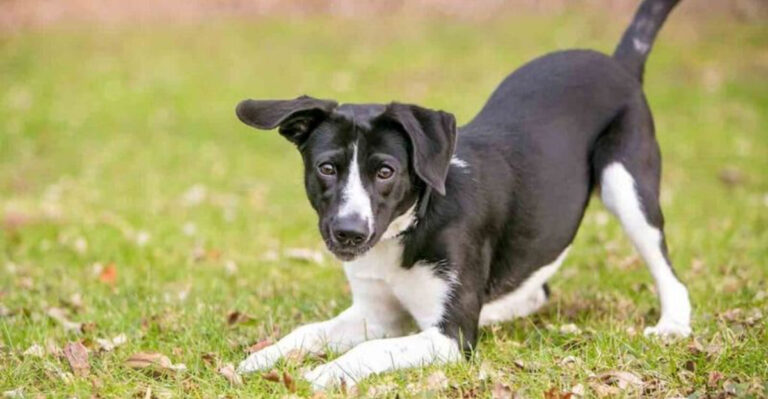12 Facts About The U.S. War Dog Cemetery You Didn’t Know
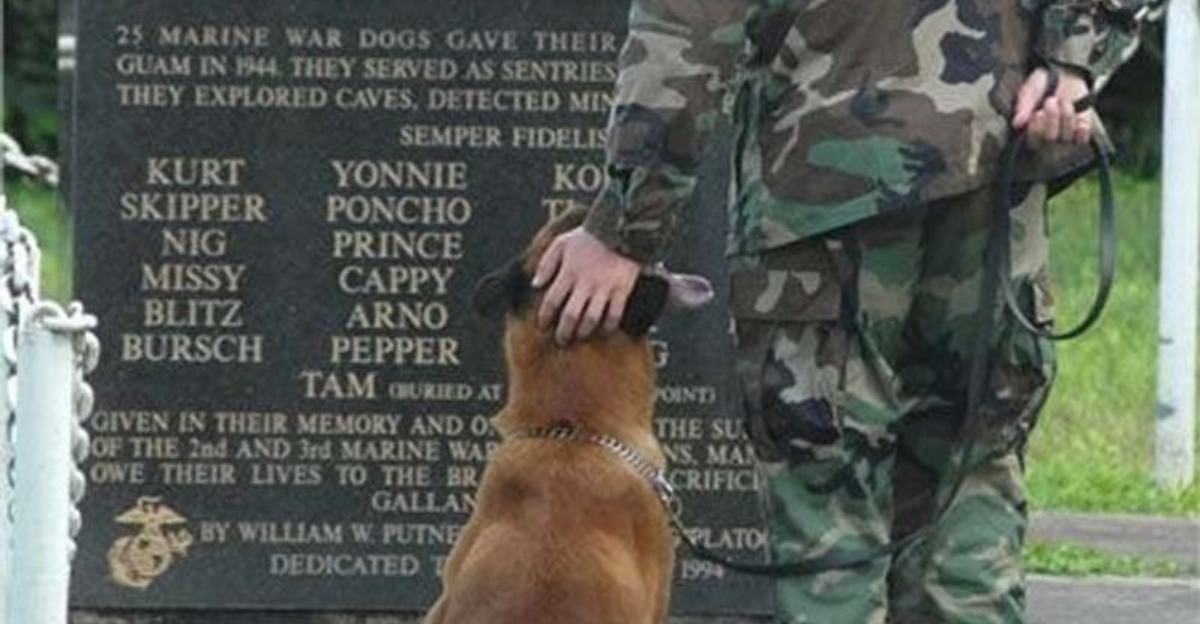
Hidden on the eastern shore of Guam lies a special place honoring four-legged American heroes. The U.S. War Dog Cemetery pays tribute to the brave canines who saved countless lives during the Pacific campaigns of World War II.
While many know about memorials for human soldiers, this unique site tells a powerful story of loyalty and sacrifice that often goes untold.
1. The Cemetery Started With Just 25 Dogs
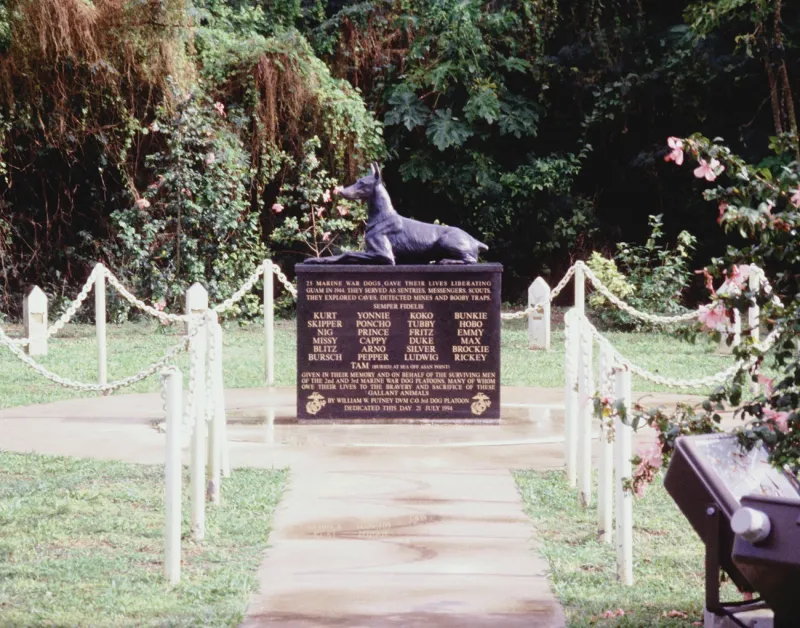
Back in 1944, when the cemetery was first established, it contained only 25 fallen canine heroes. These original graves belonged to Doberman Pinschers who served with the 2nd and 3rd Marine War Dog Platoons during the liberation of Guam.
Their handlers, devastated by the loss of their partners, created simple wooden markers to honor their sacrifice. What began as an informal tribute evolved into the permanent memorial we know today.
2. It’s The First Official U.S. Military Working Dog Cemetery

Long before other military dog memorials existed, this sacred ground broke new ground. Established during active combat in WWII, it holds the distinction of being America’s first official burial site dedicated solely to military working dogs.
The cemetery’s creation marked a significant shift in how America viewed its canine warriors. Rather than being considered mere equipment, these dogs received recognition as true soldiers deserving of honor and remembrance.
3. The Famous Doberman Statue Has A Nickname
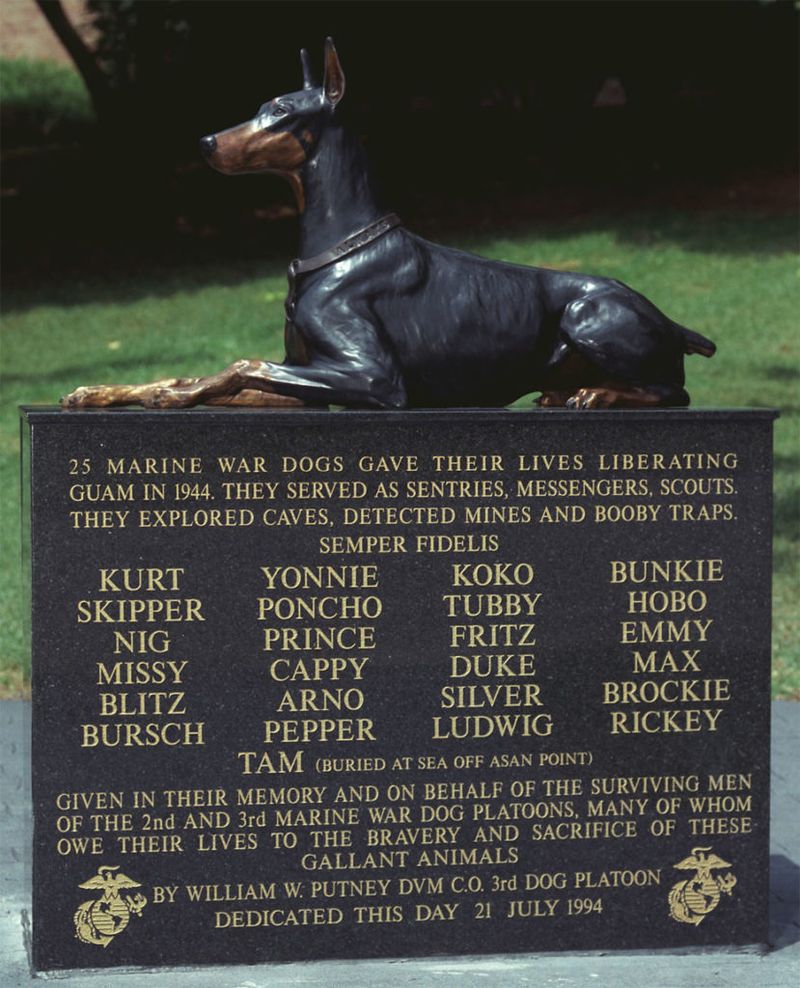
The bronze Doberman statue standing guard over the cemetery isn’t just any memorial – it’s affectionately called “Always Faithful” or “Semper Fidelis” in Latin. Created by sculptor Susan Bahary in 1994, this powerful figure captures a Doberman standing alert atop a granite pedestal.
Marines who served with these dogs immediately recognize the stance as the classic “point” position these sentries would take when detecting enemy soldiers nearby, a posture that saved countless American lives.
4. These Dogs Prevented Over 10,000 Casualties

Military historians estimate that the war dogs of the Pacific Theater prevented more than 10,000 American casualties. Their acute senses detected hidden enemy positions and ambushes that human soldiers couldn’t perceive.
One dog, a Doberman named Kurt, sacrificed himself by alerting to a camouflaged Japanese machine gun nest just seconds before it opened fire. His warning allowed Marines to take cover and neutralize the threat, saving an entire platoon.
5. The Cemetery Was Almost Lost To History

After World War II ended, the cemetery fell into disrepair as jungle vegetation reclaimed the area. For nearly 40 years, the site was largely forgotten, with only a few local caretakers maintaining the grounds.
In 1989, retired Marine Corps Lieutenant Colonel William Putney, who had served as the commanding officer of the 3rd War Dog Platoon, returned to Guam. Shocked by the cemetery’s condition, he launched a passionate campaign to restore and preserve this sacred ground.
6. Kurt’s Sacrifice Inspired A Children’s Book
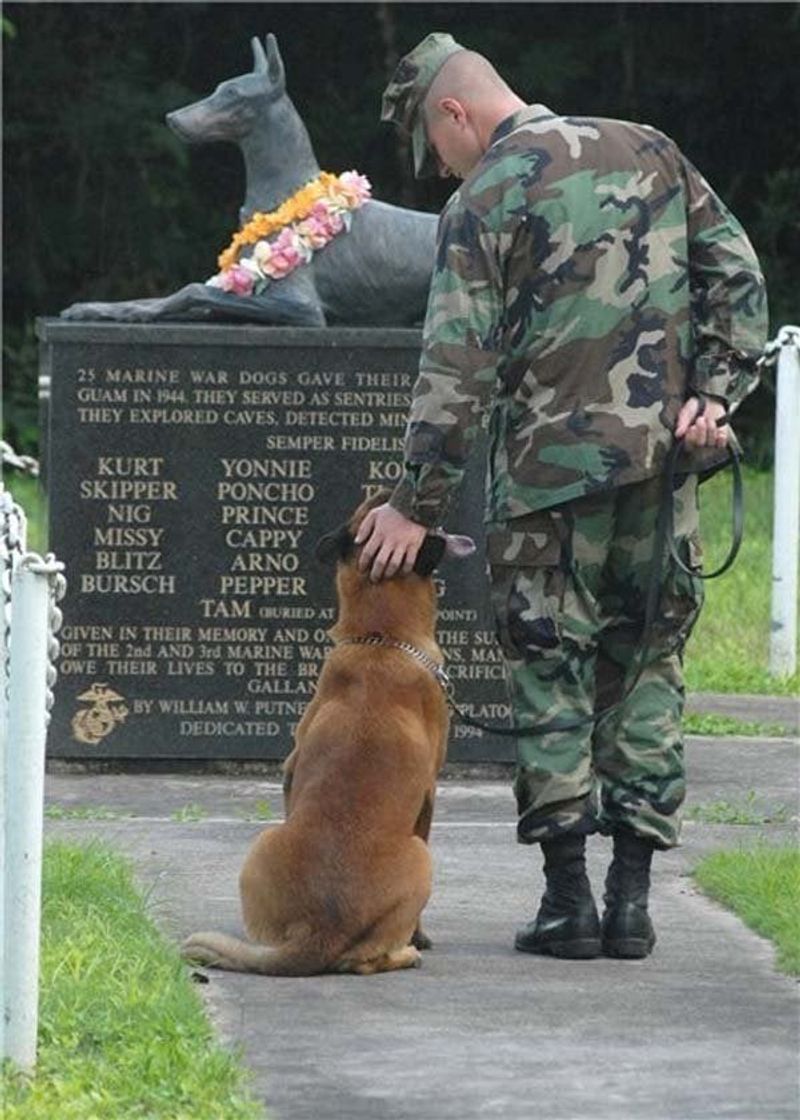
The heroic story of Kurt, one of the first dogs buried at the cemetery, inspired the children’s book “Loyal Forces: The American Animals of World War II.” His tale of sacrifice continues to teach younger generations about courage and loyalty.
Kurt detected a well-hidden Japanese machine gun position during the liberation of Guam. Though fatally wounded in the ensuing firefight, his warning saved his entire Marine patrol from walking into a deadly ambush.
7. The Cemetery Recently Added A Wall Of Honor
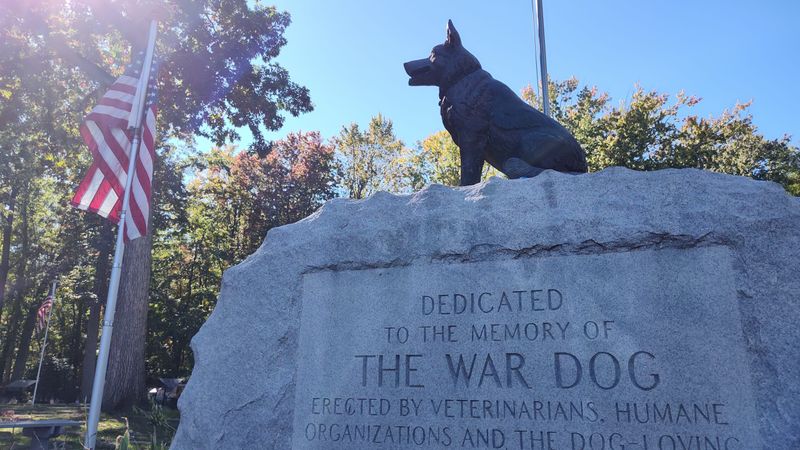
In 2020, the memorial expanded to include a special Wall of Honor listing the names of all 25 original war dogs buried there. Each name is accompanied by the dog’s service details and a brief description of their contributions during the Guam campaign.
This addition came after years of research by military historians who worked to document the specific actions and handlers associated with each canine. The wall ensures these individual stories won’t be lost to time.
8. The Cemetery Holds Annual Remembrance Ceremonies
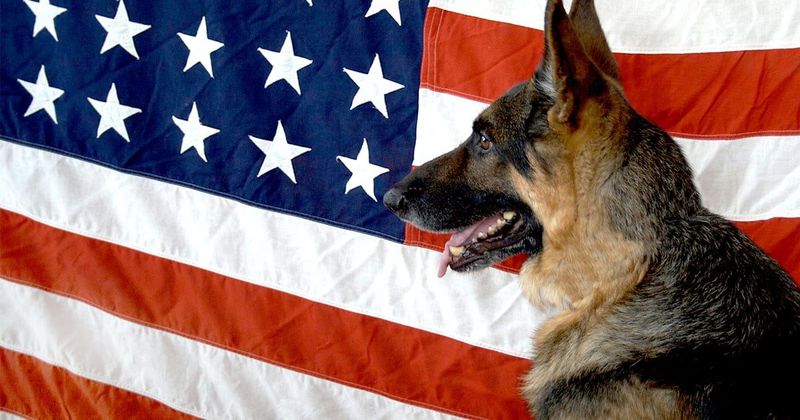
Every July 21st, coinciding with Guam’s Liberation Day, a special ceremony honors the war dogs. Current military working dog teams from Andersen Air Force Base and Naval Base Guam participate alongside veterans and local officials.
The tradition includes a 21-gun salute, the playing of Taps, and the laying of wreaths. Perhaps most moving is when current military working dogs and their handlers stand at attention before the graves of their predecessors.
9. The Memorial Includes A Time Capsule

Beneath the main memorial stone lies a little-known time capsule installed during the 50th anniversary restoration in 1994. It contains dog tags, photographs, and handwritten notes from the original Marine dog handlers who served in WWII.
Also included are modern military working dog equipment samples and letters from schoolchildren expressing gratitude to these four-legged heroes. The capsule is scheduled to be opened on July 21, 2044—the 100th anniversary of Guam’s liberation.
10. The Dogs’ Original Missions Were Classified
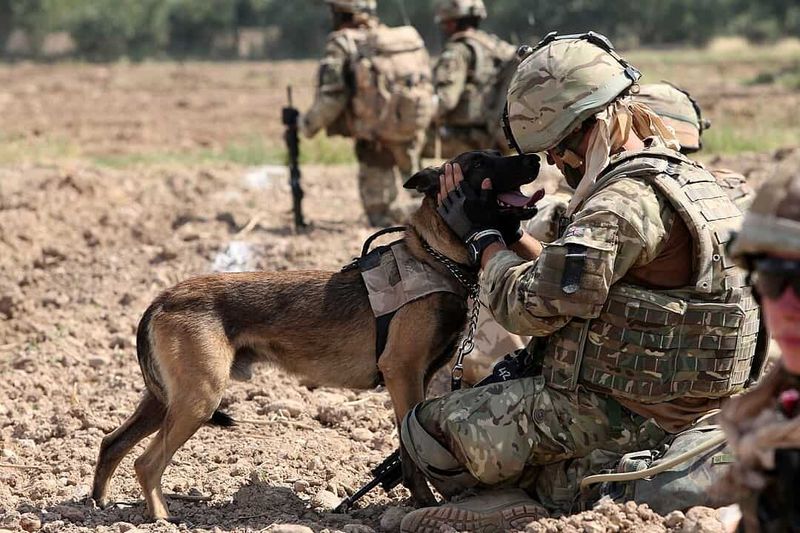
Many operations involving these war dogs remained classified until the 1990s. Documents finally revealed that some teams conducted covert night reconnaissance missions, slipping behind enemy lines to gather intelligence on Japanese positions.
Other dogs were trained for specialized tasks like carrying messages through artillery fire or locating wounded Marines in dense jungle. The cemetery contains the remains of dogs who performed all these dangerous duties, their full stories only recently coming to light.
11. The Cemetery Influenced Modern Military Dog Protocols
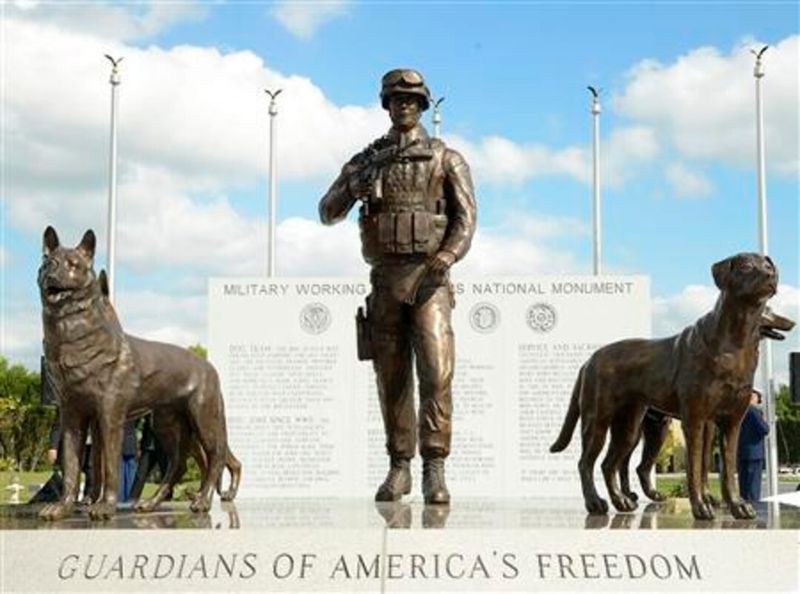
Before the war dogs of Guam, military canines were typically euthanized after their service or abandoned overseas. The profound bond between these dogs and their Marine handlers changed military policy forever.
Today’s protocols mandating honorable retirement for military working dogs trace directly back to the precedent set at this cemetery. Modern handlers often cite the Guam War Dog Cemetery when advocating for their partners’ welfare and recognition.
12. The Site Became A National Monument In 2019

After decades as a Marine Corps memorial, the cemetery received national monument status in 2019. This designation ensures permanent federal protection and provides resources for preservation and educational programs about these canine heroes.
The successful campaign involved veterans’ groups, animal welfare organizations, and thousands of ordinary Americans who wrote letters supporting the elevation. Visitors now receive informational materials explaining the unique historical significance of America’s first war dog memorial.


